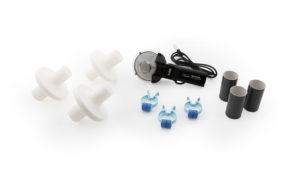As a veteran science teacher and chair of the science department at Manlius Pebble Hill School, an independent preK-12 school in Syracuse, NY, I am always looking for new and exciting ways to engage my students in scientific discovery. I also help students quantify data in meaningful ways, so they can, in turn, identify patterns, outliers, and trends, and make real-world connections with their data. It wasn’t until I attended a Vernier Summer Institute this past year that I realized the power of data-collection technology in meeting these goals.
While the workshop wasn’t my first introduction to data-collection technology, it was the first time I really had the opportunity to see it in action and experience it in a hands-on way, thanks to the training specialists from Vernier. I immediately thought, “We have to have this technology in our classrooms!” As a result, my school purchased a variety of Vernier sensors, including the Spirometer, Force Plate, pH Sensor, EKG Sensor, and others. The technology’s ease of use and accessibility allows students to really take charge of the learning process as they acquire data; the technology has been a game changer.
The technology’s ease of use and accessibility allows students to really take charge of the learning process as they acquire data; the technology has been a game changer.
I’ve incorporated the technology in multiple lessons with my middle school science students. Some of their favorite experiments explored the relationship between temperature and reaction magnitude of Mentos and soda and measuring a laser’s intensity as it is shown through various flavors/colors of Jell-O. They also tested the strength of balsa wood, investigated grip strength using various rock climbing hand holds, and more. Being able to see real-time data during the experiments creates real “wow” moments for my students. Biology students also selected their own foods to study as we investigated cellular buffers and later in the year assessed their own EKGs.
Being able to see real-time data during the experiments creates real “wow” moments for my students.
In addition to these experiments, students also use the data-collection technology as part of their independent STEM fair projects, which they had the opportunity to share with senior citizens at a nearby extended care facility. Hearing the inter-generational discussions happening throughout the room about the use of the probeware and technology was inspirational.
My excitement for incorporating data-collection technology into teaching and learning has been contagious—our school’s chemistry, AP biology, physics and Earth science teachers incorporate technology into their lessons as well. As my colleagues and I continue to expand our use of data-collection technology with students, I am anxious to witness the innovative learning opportunities it lends.



